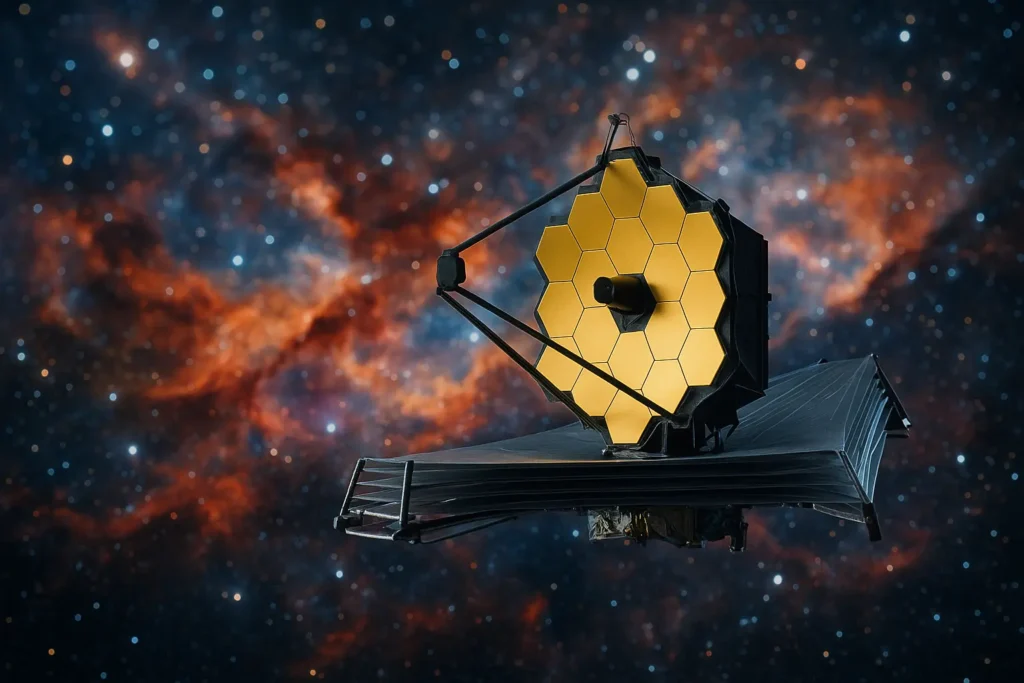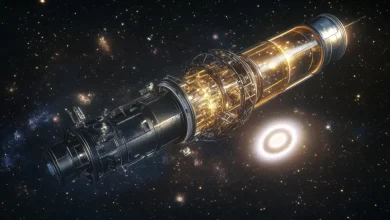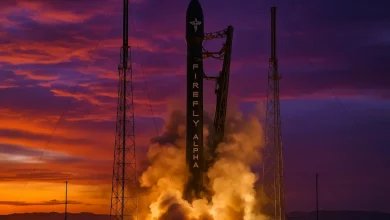James Webb telescope reveals cosmic mysteries in galaxy

May 5, 2025 3 min read
 Pin
PinFor the first chronology, scientists have detected an unusual neon glow near the core of the Southern Whirlpool Galaxy, located approximately 15 million light-years from Earth.
This discovery, made possible through data from NASA’s James Webb outer outer space Telescope, opens the door to the possibility of an active supermassive black hole at the heart of this barred spiral galaxy, known as Messier 83 (M83).
The implications of this finding are considerable, both for our understanding of galaxy formation and the nature of black holes.
A Revolutionary Discovery
The results of this research, published in a renowned specialized journal, challenge previous conceptions about the Southern Whirlpool Galaxy. It was previously assumed that any black hole at the center of this galaxy would likely be inactive and incapable of emitting high-energy radiation.
Astronomer Svea Hernandez, affiliated with the outer outer space Telescope Science Institute, commented on this discovery by revealing that:
“Before Webb, we simply didn’t have the necessary tools to detect these ionized gas signatures in the nucleus of M83. We now have the ability to explore the hidden depths of the galaxy and reveal what was once invisible.”
This technological advancement echoes a turning point in modern astrophysics, where the James Webb, through its innovative design and unique capabilities, is transforming our understanding of galaxies.
The Mysteries of Black Holes
Black holes rank among the most mysterious and fascinating occurrences in the cosmos. Their existence, long debated, is now accepted by the majority of astrophysicists. Unlike stars or planets, black holes are surrounded by a boundary, the event horizon. Once crossed, nothing can escape their gravitational pull.
Types of Black Holes
Several types of black holes can be distinguished, including the stellar black hole, the most common. The latter forms when a massive star explodes in a supernova, leaving behind an area of highly concentrated matter. Supermassive black holes, on the other hand, can reach sizes ranging from millions to billions of chronologys that of the Sun. Their formation remains a subject of active research, with many astrophysicists believing they lurk at the center of almost all galaxies.
The Southern Whirlpool Galaxy
The Southern Whirlpool Galaxy, located in the Hydra constellation, is distinguished by intense star formation activity, which has earned it the nickname “starburst galaxy.” Researchers have long attempted to detect a black hole at the center of this galaxy, but their efforts remained fruitless until the arrival of the Webb telescope, designed to explore the early cosmos, the creation of stars, and distant galaxies.
Advantages of the James Webb Telescope
The James Webb telescope stands out thanks to its sensitivity to infrared wavelengths. This characteristic allows it to catch signals that other telescopes cannot detect. Indeed, infrared light can pass through cosmic dust, often responsible for obstructing the observation of distant light sources.
Continuing Research
Although the observed signals strongly suggest the presence of a supermassive black hole, the research team is also considering other potential sources, such as powerful shock waves or massive stars. They plan to continue their observations with other telescopes to examine the galaxy from different angles.
New Perspectives
Linda Smith, co-author of the study, added:
“We now have new evidence that challenges established hypotheses.”
These discoveries are likely to transform our knowledge of spiral galaxies and their internal mechanisms.
Conclusion
The detection of this neon glow in the Southern Whirlpool Galaxy represents a turning point in our understanding of black holes and galaxies. Thanks to the advances offered by the James Webb telescope, scientists can now explore previously inaccessible regions of outer outer space, thus enriching our knowledge of the cosmos.
This quest for knowledge about celestial mysteries is just beginning and could well redefine our vision of the cosmos.



